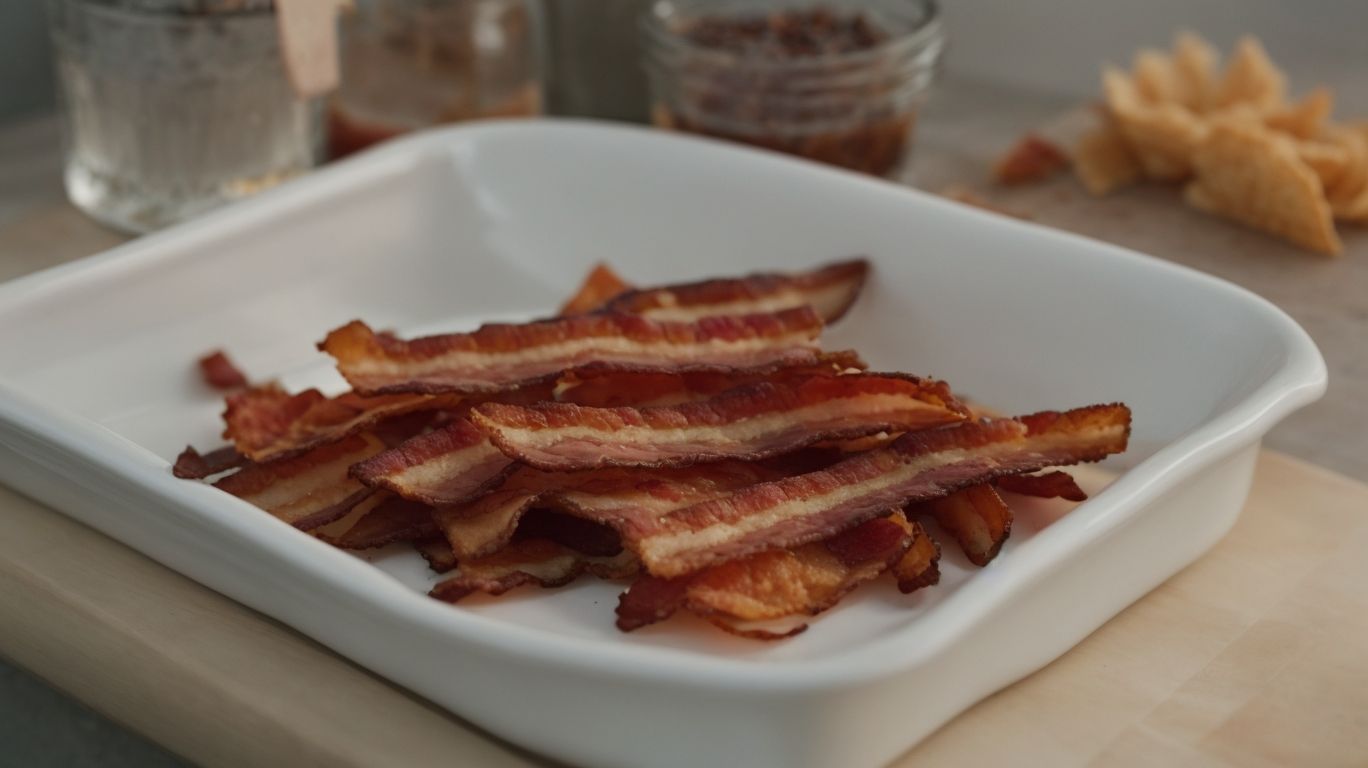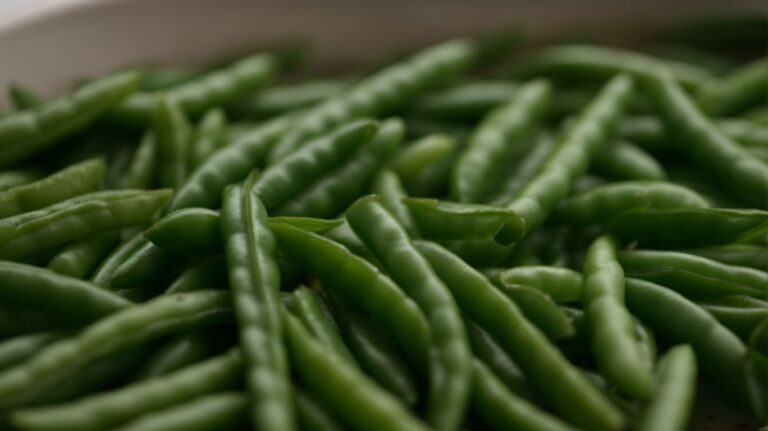How to Cook Bacon in the Oven Without Smoking Up the House?
Love bacon but hate the mess and hassle of cooking it on the stovetop? Look no further!
We will show you how to cook bacon in the oven – a method that guarantees even cooking, less mess, and a healthier option.
Learn what you need, follow our step-by-step instructions, discover some tips and tricks, and enjoy perfectly cooked bacon without smoking up your kitchen!
Key Takeaways:
Why Cook Bacon in the Oven?
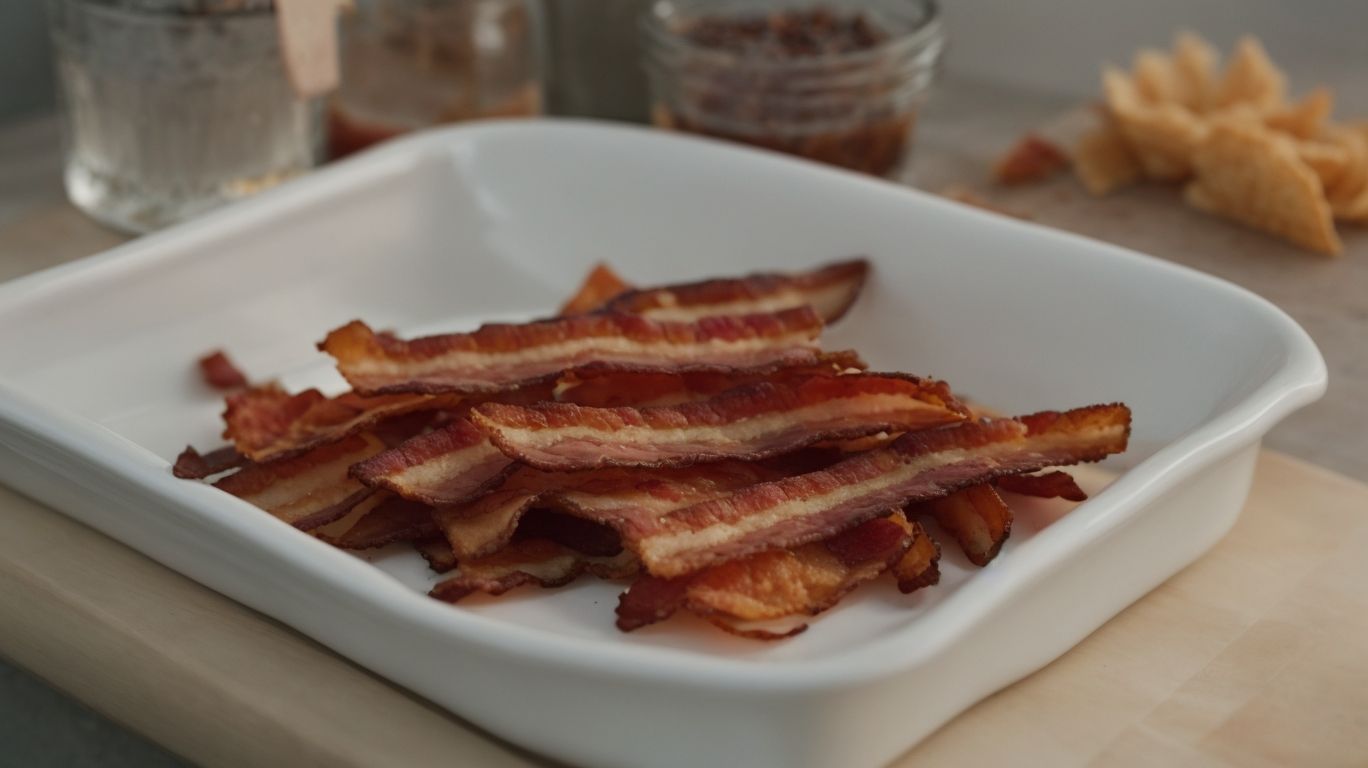
Credits: Poormet.Com – Jack Lopez
Cooking bacon in the oven offers numerous benefits. It ensures even cooking, reduces mess, and provides a healthier option compared to stove cooking.
One of the standout advantages of baking bacon in the oven is the remarkable evenness in cooking it achieves. By laying out the bacon slices on a baking sheet, they cook uniformly without any hot spots or uneven frying. This leads to a consistent and perfect crispiness throughout all the slices. Baking bacon greatly minimizes the mess associated with traditional stove cooking, as the grease is contained within the pan, making cleanup a breeze.
Even Cooking
When you cook bacon in the oven, you ensure that each slice is evenly cooked to perfection, resulting in uniformly crispy bacon slices.
One of the key reasons oven baking produces such consistent results is the even distribution of heat within the oven. Unlike stovetop cooking, where direct heat can vary across the pan, the oven creates a uniform environment. This allows every slice of bacon to cook at the same rate, reducing the risk of some pieces being undercooked while others are burnt.
To achieve that perfect crispiness, setting the oven temperature between 400-425°F is crucial. This high heat helps the fat in the bacon render out quickly, leaving behind a crispy texture without becoming overly greasy.
Less Mess
Baking bacon in the oven eliminates the mess associated with stove cooking, including grease splatters and the need for constant monitoring in a skillet.
Unlike traditional stovetop methods that often result in grease splatters on countertops, walls, and kitchen surfaces, baking bacon in the oven allows for a contained environment within the baking sheet or tray. The oven’s enclosed space helps to minimize the chances of bacon fat splattering all over the place, making cleanup a breeze. By using the oven, you can not only cook bacon in larger quantities at once but also avoid the risk of hot oil splattering that is commonly associated with skillet cooking.
Healthier Option
Opting for oven-cooked bacon can be a healthier choice as excess bacon fat drips away during the baking process, reducing overall fat consumption.
When you bake bacon in the oven, the excess fat that otherwise gets absorbed while pan-frying is instead drained off and collected, resulting in a crispier, less greasy outcome. By utilizing the oven method, you are able to enjoy the rich flavor of bacon in a more health-conscious manner. This process not only leads to a reduced calorie intake but also cuts down on the consumption of unnecessary saturated fats, thus benefiting your cardiovascular health in the long run.
What You’ll Need
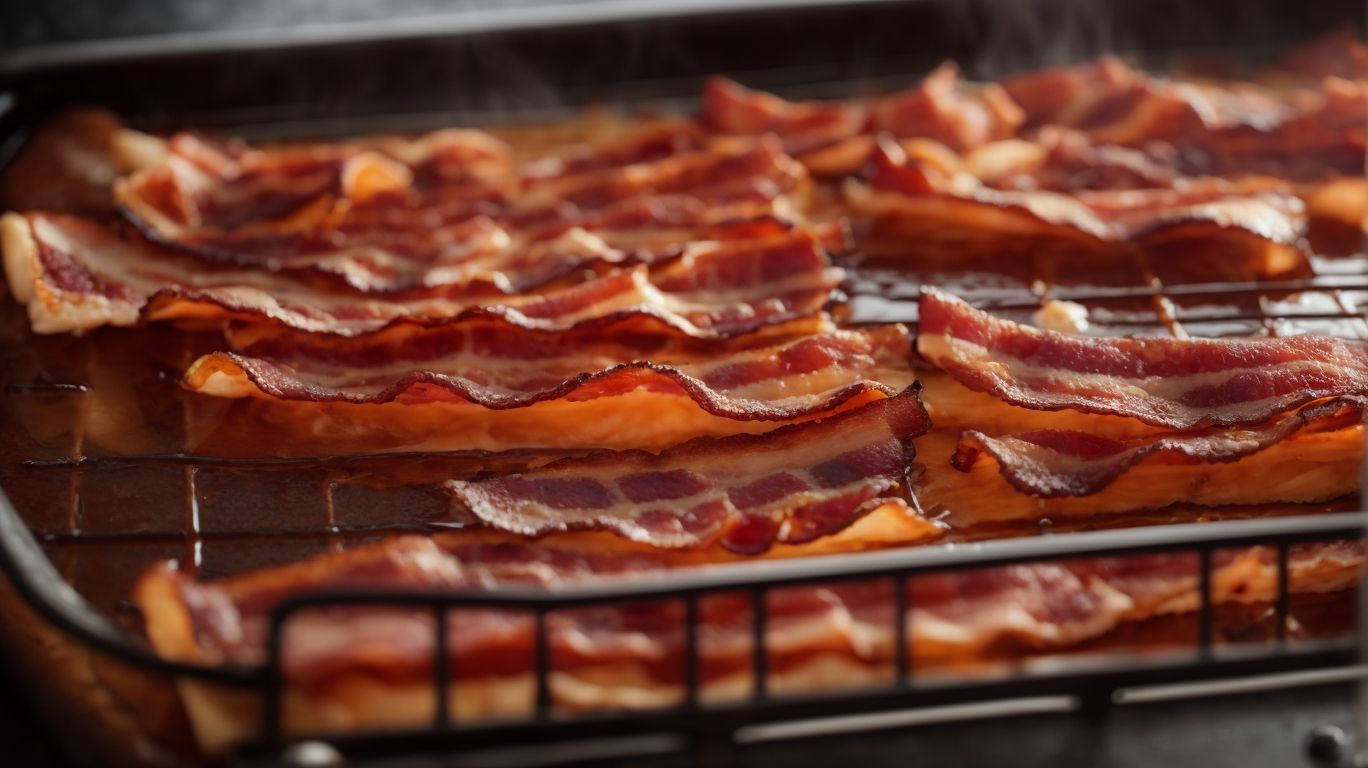
Credits: Poormet.Com – Gerald Mitchell
To cook bacon in the oven successfully, gather essential supplies like a baking sheet, parchment paper, or aluminum foil for easy cleanup and grease management.
Having a reliable bacon slicer can streamline the preparation process and ensure evenly sliced bacon strips, enhancing the presentation of your dish. Always opt for high-quality bacon slices to achieve the desired texture and flavor.
When arranging bacon slices on the baking sheet, ensure they are evenly spaced to promote even cooking and crispy results.
Preheating the oven to the recommended temperature is crucial for achieving perfectly cooked bacon. The baking sheet serves as a stable platform for the bacon while allowing excess grease to drip off and accumulate at the bottom, preventing the bacon from becoming overly greasy.
Baking Sheet
A baking sheet serves as a fundamental tool for oven-cooked bacon, providing a flat surface for the bacon to cook evenly and allowing excess grease to drain away.
By utilizing a baking sheet, you create a consistent level of heat distribution throughout the bacon strips, ensuring that each piece is cooked to perfection without any uneven spots. This method not only reduces the chances of burnt edges but also helps in achieving that desired crispy texture.
The baking sheet acts as a barrier between the bacon and the oven rack, preventing drippings from splattering and accumulating at the bottom of the oven. This not only makes the cleaning process much easier but also minimizes the risk of smoke or grease flare-ups during the cooking process.
Parchment Paper or Aluminum Foil
Lining your baking sheet with parchment paper or aluminum foil not only simplifies cleanup but also helps in managing bacon grease for a hassle-free cooking experience.
One of the key benefits of using parchment paper or aluminum foil when baking bacon is the convenience it offers in cleaning up. Instead of scrubbing away at stubborn grease stains, you can simply lift off the parchment paper or aluminum foil along with the grease, leaving your baking sheet almost spotless. This not only saves time and effort but also extends the lifespan of your baking sheet by protecting it from greasy buildup.
Cooling Rack
A cooling rack elevates the bacon slices during baking, allowing excess bacon fat to drip off and promoting a super extra-crisp texture desired by many.
By lifting the bacon above the pan, the cooling rack helps the hot air in the oven to circulate around each slice evenly, ensuring that the bacon cooks uniformly. This process not only avoids the soggy underside that can result from bacon sitting in its own grease but also leads to a delectably crispy finish.
As the bacon releases its fat, it falls below the rack, keeping the slices from becoming greasy and aiding in the caramelization process for that perfect balance of flavor and texture.
Bacon Slicer (Optional)
For efficient batch cooking or uniform bacon slices, consider using a bacon slicer if available, allowing you to prepare multiple slices consistently for your desired recipes.
A bacon slicer not only saves time but also ensures uniformity in your bacon slices, crucial for even cooking and a professional presentation. By utilizing this tool, you can achieve slices of consistent thickness, enhancing the taste and aesthetic appeal of your dishes.
A bacon slicer can be a safer option compared to manual slicing, reducing the risk of accidental cuts or uneven slices. This kitchen gadget is a valuable investment for any home cook or professional chef looking to streamline their cooking process and elevate the quality of their culinary creations.
Step-by-Step Instructions
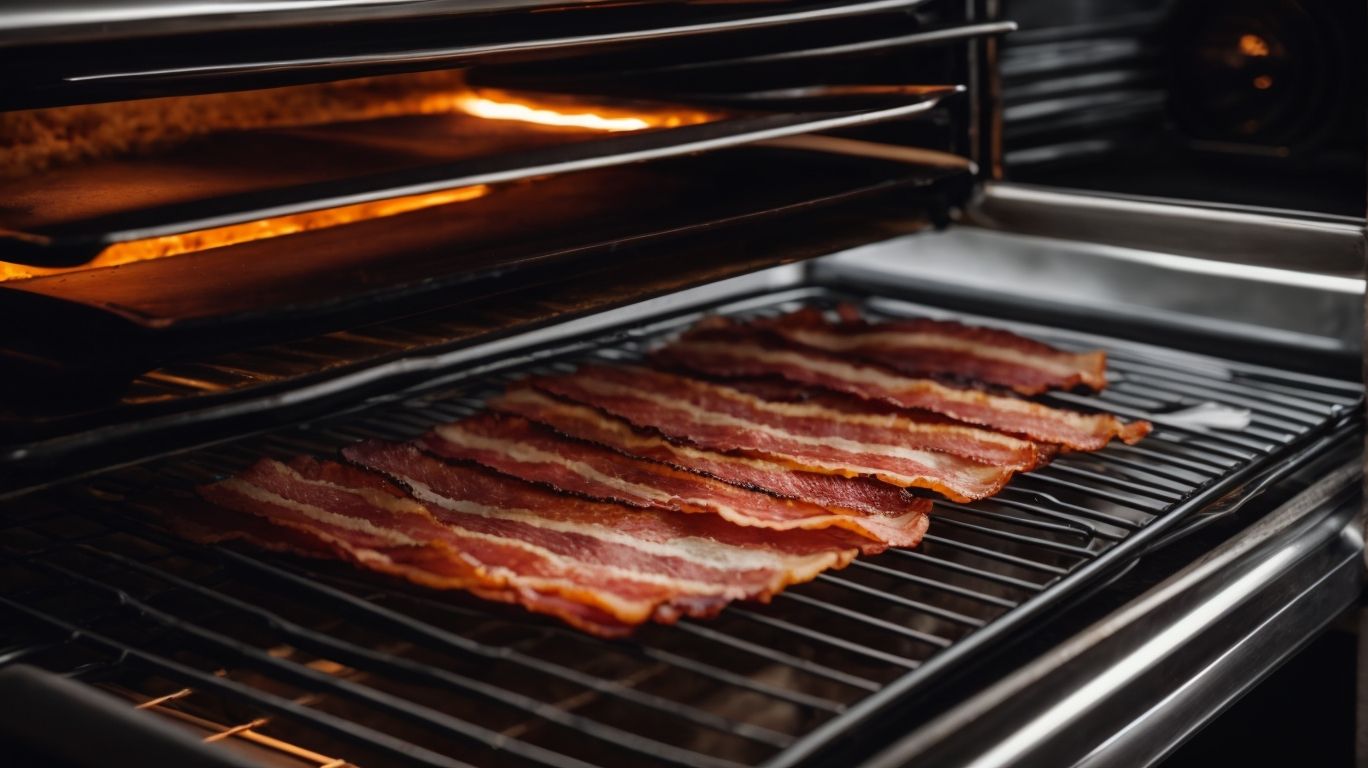
Credits: Poormet.Com – Juan White
Follow these step-by-step instructions to bake your bacon to crispy perfection: preheat the oven, line the baking sheet with parchment paper or aluminum foil, place the bacon on the rack, bake until desired crispiness, and check for doneness.
Start by preheating your oven to 400°F, allowing it to reach the desired temperature.
Next, cover a baking sheet with parchment paper or aluminum foil, creating an easy-to-clean surface for the bacon.
Then, place the bacon slices on a wire rack placed on the baking sheet, ensuring even cooking and crispiness.
Slide the baking sheet into the preheated oven and bake the bacon until it reaches the desired level of crispiness, typically around 15-20 minutes.
Check for doneness by examining the color and texture of the bacon, ensuring it is evenly cooked and crispy to perfection.
Preheat the Oven
Begin by preheating your oven to the recommended temperature for baking bacon, ensuring that the heat is evenly distributed for consistent cooking.
Preheating the oven is a crucial step in the baking process as it sets the stage for the bacon to cook perfectly. By heating the oven beforehand, the baking bacon is introduced to a consistent and stable temperature, allowing for even cooking throughout. This helps in achieving that desired crispy texture while ensuring that the bacon cooks through evenly without burning or undercooking.
An ideal oven temperature for baking bacon typically ranges between 375°F to 400°F, providing the right level of heat to render the fat and crisp up the meat just right. This temperature range strikes a balance between cooking the bacon thoroughly and ensuring it doesn’t overcook or become too greasy.
By preheating your oven to the specified range for baking bacon, you create an environment that promotes proper caramelization and browning, elevating the flavor profile of the bacon slices. This step also helps in minimizing the cooking time, ensuring a quicker and more efficient bacon-baking process for delicious results.
Line the Baking Sheet
Line your baking sheet with parchment paper or aluminum foil to prevent bacon fat from sticking, simplify cleanup, and aid in grease absorption during baking.
When using parchment paper, simply cut a piece that fits the baking sheet, lay it down, and place your bacon strips on top. The paper’s non-stick nature ensures the bacon won’t adhere to the sheet, making removal effortless.
As for aluminum foil, crumple it gently before laying it flat on the sheet to create a textured surface that allows the bacon fat to drip away from the meat. This not only promotes even cooking but also assists in grease management.
Place the Bacon on the Rack
Arrange the bacon slices on the cooling rack placed over the prepared baking sheet, ensuring that each slice is well-positioned for even cooking in the oven.
Properly positioning the bacon slices on the cooling rack is crucial for allowing the hot air to circulate around each slice, resulting in uniform cooking and that perfect crunchy texture.
Placing the bacon directly on the baking sheet can lead to uneven cooking and a greasier final product.
By using the rack, excess grease can drip off the bacon, promoting better airflow and preventing the bacon from sitting and cooking in its own fat. This method not only enhances the taste but also ensures a healthier outcome by reducing the overall fat content.
Bake the Bacon
Place the prepared bacon in the oven and bake until it reaches the desired level of crispiness, monitoring the cooking progress to achieve perfectly crispy bacon slices.
To ensure your crispy bacon turns out just right, start by preheating your oven to the recommended temperature. Lay the bacon slices on a baking sheet, ensuring they are not overlapping to allow even cooking. As the bacon bakes, keep a close eye on it to prevent burning. For extra crispiness, you can flip the bacon halfway through the cooking process. Once it reaches the desired level of crispness, carefully remove it from the oven using tongs or a spatula to avoid potential burns. Let the bacon rest on a paper towel-lined plate to absorb excess grease before serving.
Check for Doneness
To ensure your bacon is perfectly cooked, check for doneness by assessing its texture and color, aiming for crispy results rather than chewy or undercooked bacon.
When checking the bacon, look for a golden-brown hue with a slight crunch when touched. The bacon should have a uniform color and an even texture throughout. If the bacon appears limp or soggy, it may need more time in the oven to achieve that desired crispiness. Remember, overcooked bacon can become brittle and burnt, so keep a close eye on it towards the end of the baking process.
Tips and Tricks
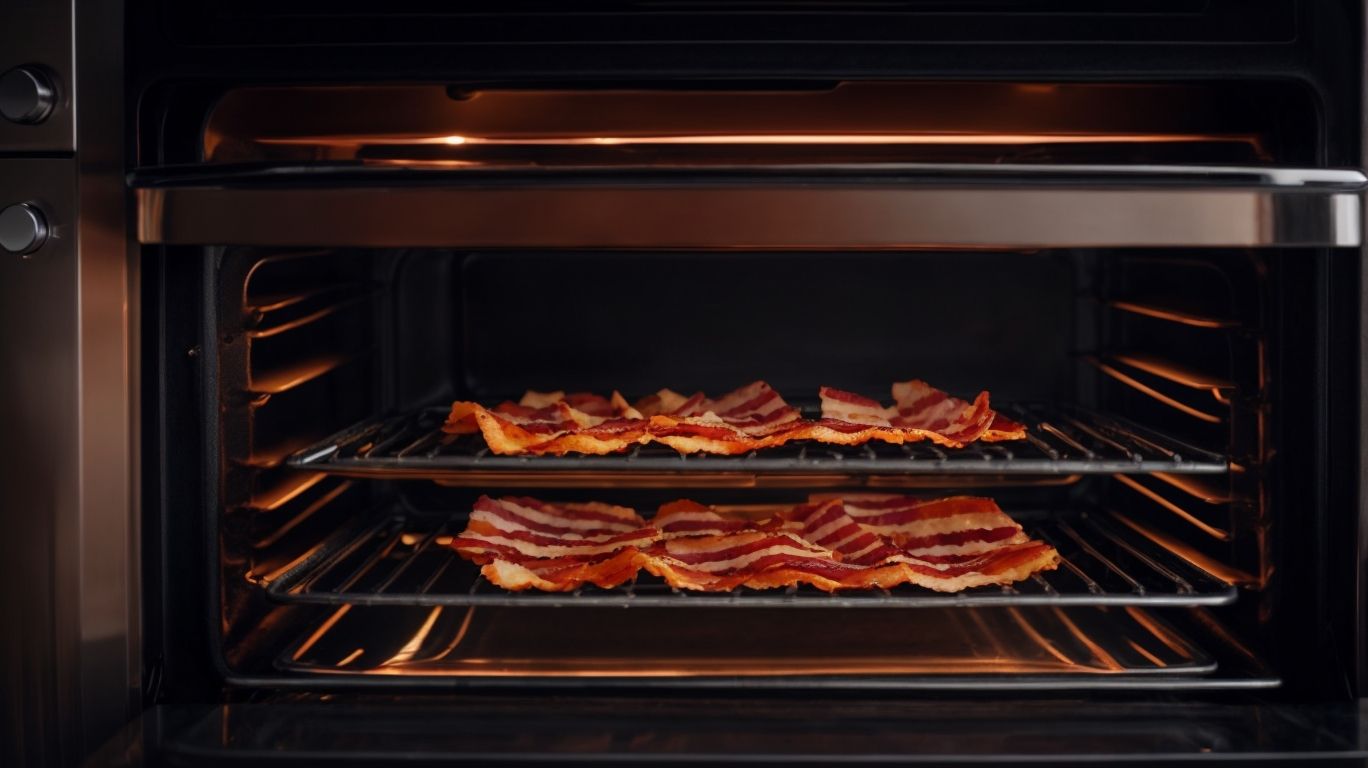
Credits: Poormet.Com – David Jackson
Enhance your bacon baking skills with these useful tips and tricks: use a bacon slicer for consistent slices, opt for parchment paper to simplify cleanup, and save the flavorful bacon grease for future cooking endeavors.
When using a bacon slicer, you not only achieve evenly cut slices, but it also speeds up the prep process, ensuring your bacon cooks uniformly. Parchment paper acts as a non-stick barrier, making post-cooking cleanup a breeze. Don’t forget the value of bacon fat – it adds incredible flavor to various dishes. By saving bacon grease, you reduce waste and enhance the taste of your cooking, giving your dishes that irresistible bacon essence.
Use a Bacon Slicer for Even Slices
Invest in a quality bacon slicer to achieve uniform slices for batch cooking, ensuring consistent thickness and presentation in your culinary creations.
When preparing large quantities of bacon for scenarios like brunch gatherings or meal prep sessions, a bacon slicer can truly be a game-changer. The precision of each slice not only enhances the visual appeal of your dishes but also influences the cooking process. With evenly sliced bacon, you can control the cooking time more effectively, preventing some pieces from being overcooked while others remain underdone. This ensures that every bite of your dish tastes just right, creating a harmonious blend of flavors and textures.
Use Parchment Paper for Easy Cleanup
Opt for parchment paper when baking bacon to simplify cleanup efforts and minimize the need for extensive scrubbing or soaking of baking equipment.
By using parchment paper, you can enjoy the convenience of not having to deal with grease buildup on baking sheets, reducing the time and effort required for post-cooking maintenance. The non-stick surface of parchment paper prevents bacon from sticking, ensuring easy removal without leaving behind stubborn residues that can be challenging to clean. This not only makes cleanup a breeze but also extends the lifespan of your baking tools by protecting them from stubborn, baked-on grease and oils.
Save the Bacon Grease for Cooking
Collect and store the flavorful bacon grease rendered during baking for future culinary endeavors, adding a rich and savory element to various dishes prepared in a skillet or pan.
By keeping the bacon grease on hand, you can infuse a burst of smoky, salty goodness into your cooking without the need for additional seasoning. This versatile ingredient not only brings depth of flavor but also provides a natural fat for frying or sautéing, enhancing the overall taste profile of your dishes. Whether you use it to crisp up vegetables, sear meats, or even roast potatoes, the distinctive taste of bacon grease creates a mouthwatering experience that elevates your skillet creations to a whole new level.
Conclusion
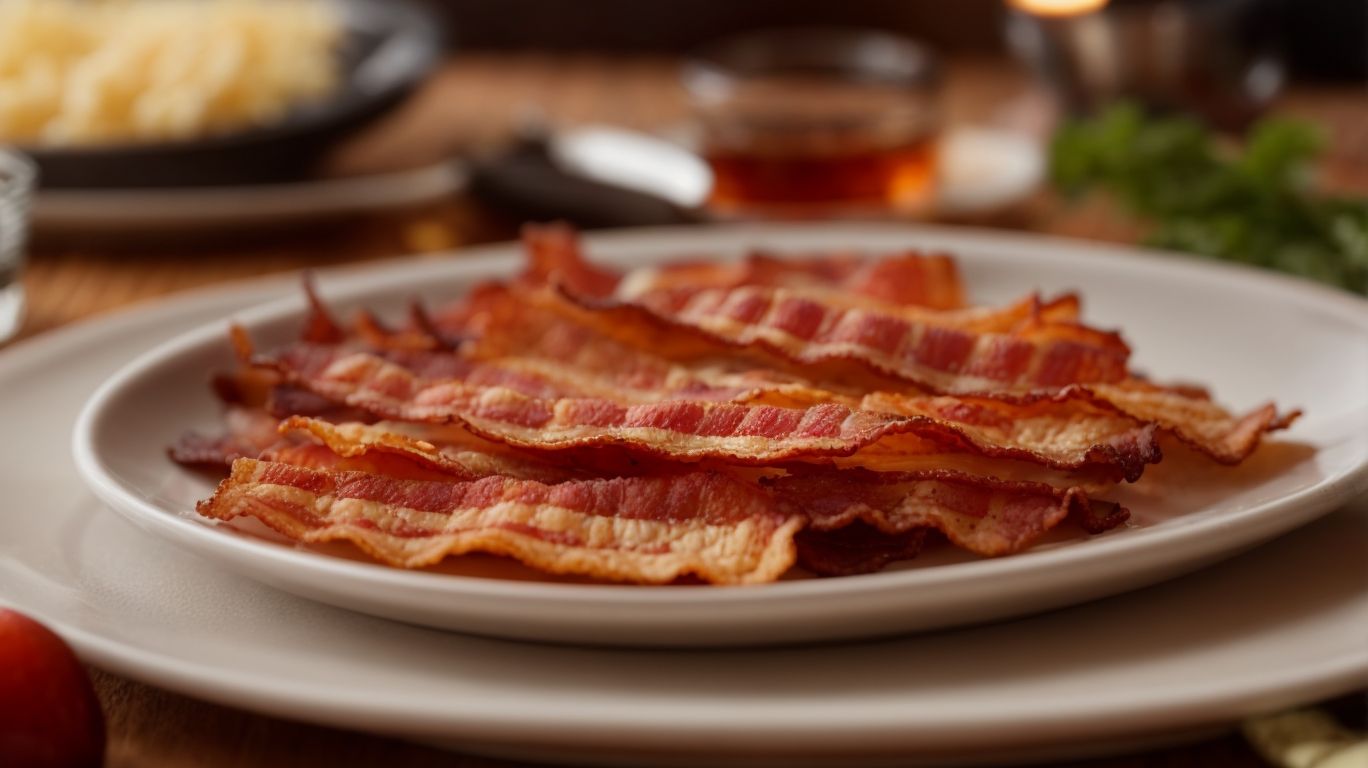
Credits: Poormet.Com – Sean Robinson
Baking bacon in the oven offers a superior cooking method that ensures crispy bacon slices, minimal mess, and a healthier option compared to traditional stove cooking.
One of the key advantages of oven-cooked bacon is the ability to achieve consistently crispy textures throughout, as the even heat distribution helps to render the fat and crisp up the edges to perfection. Cooking bacon in the oven reduces the likelihood of splattering grease, making it a cleaner option compared to the stovetop method.
Baking bacon allows the excess fat to drip off the slices, resulting in a healthier, less greasy final product. To get the best results, ensure that the oven temperature is set appropriately, usually around 400°F (200°C), for that ideal balance of crispy and juicy bacon.
About the Author
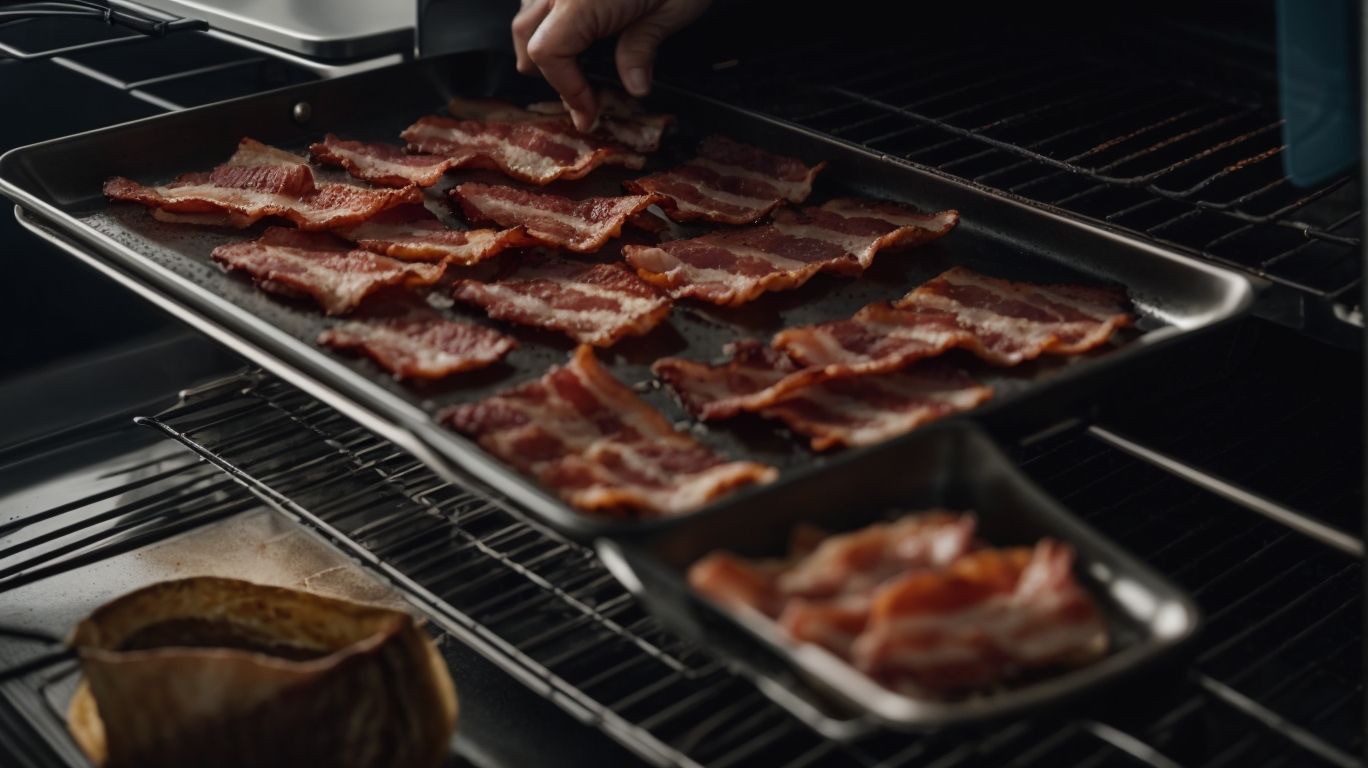
Credits: Poormet.Com – Zachary Rodriguez
Martha is a culinary expert known for her innovative recipes like Savory French-Toast BLT, Baked Camembert with Rosemary and Pine Nuts, and Bacon Macaroni with Angel-Hair Pasta. Her expertise also extends to Grilled Corn dishes that elevate outdoor dining experiences.
Martha’s diverse culinary skills shine through as she combines flavors and textures to create unforgettable dishes. Her French toast recipes are particularly beloved, with a unique twist that surprises and delights the taste buds. Whether she is whipping up a decadent dessert or a comforting main course, Martha’s attention to detail and creative flair are evident in every dish she prepares.
Frequently Asked Questions
How to Cook Bacon in the Oven Without Smoking Up the House?
Follow these simple tips to cook bacon in the oven without filling your house with smoke.
What type of bacon is best for cooking in the oven?
Thick-cut bacon works best for cooking in the oven as it can withstand longer cooking times without burning.
Do I need a special pan to cook bacon in the oven?
No, you can use a regular baking sheet or a rimmed baking pan. Just make sure it has a rim to catch any grease that may drip.
How do I prevent my oven from smoking while cooking bacon?
Line your baking sheet with aluminum foil and place a wire rack on top. This will allow the bacon grease to drip off, reducing the amount of smoke.
What temperature should I set my oven to when cooking bacon?
Preheat your oven to 400 degrees Fahrenheit. This high heat will help the bacon cook quickly and evenly.
How long does it take to cook bacon in the oven?
It usually takes about 20-25 minutes to cook bacon in the oven. However, the cooking time may vary depending on the thickness of the bacon and your desired level of crispiness.

